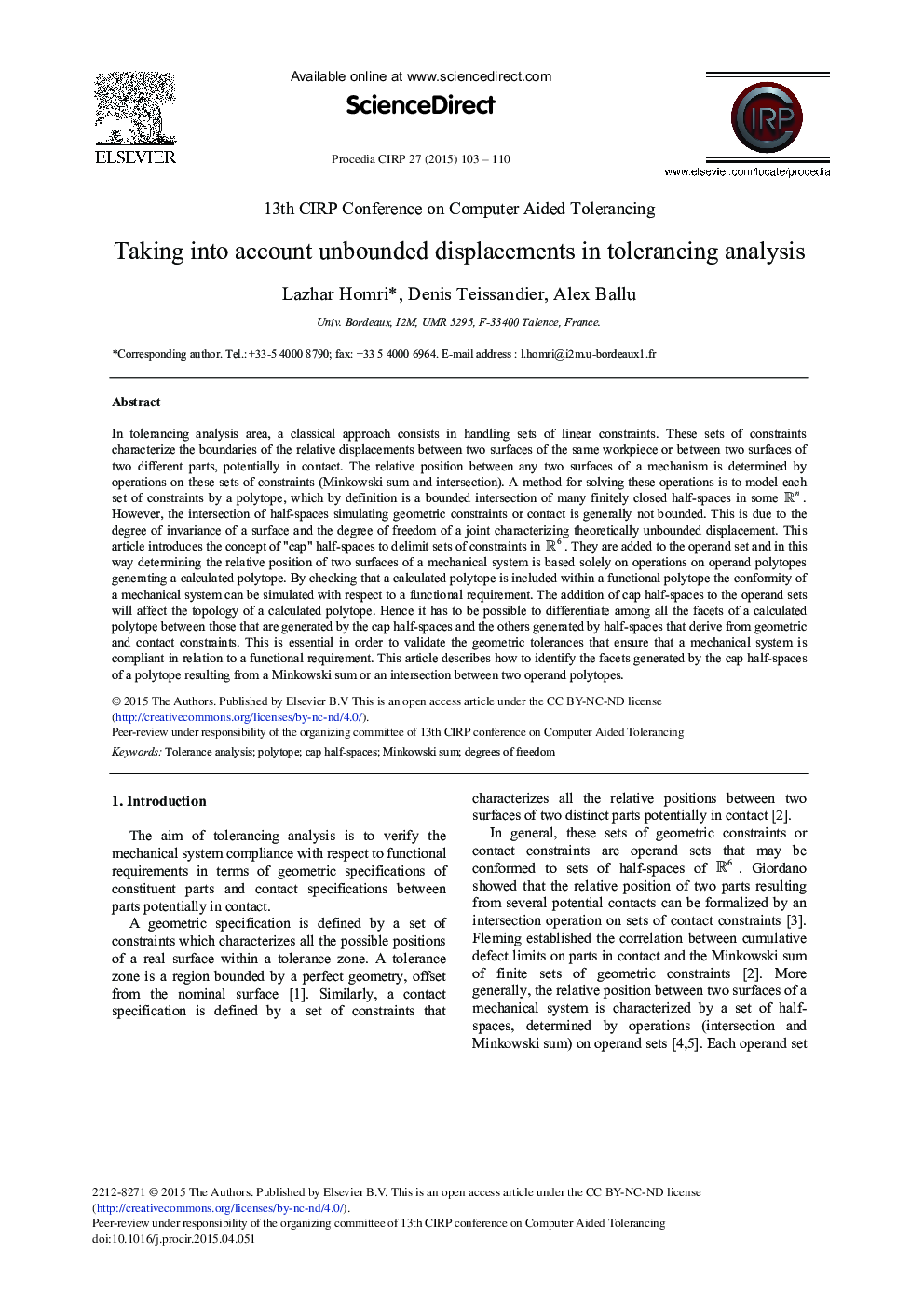| Article ID | Journal | Published Year | Pages | File Type |
|---|---|---|---|---|
| 1700101 | Procedia CIRP | 2015 | 8 Pages |
In tolerancing analysis area, a classical approach consists in handling sets of linear constraints. These sets of constraints characterize the boundaries of the relative displacements between two surfaces of the same workpiece or between two surfaces of two different parts, potentially in contact. The relative position between any two surfaces of a mechanism is determined by operations on these sets of constraints (Minkowski sum and intersection). A method for solving these operations is to model each set of constraints by a polytope, which by definition is a bounded intersection of many finitely closed half-spaces in some . However, the intersection of half-spaces simulating geometric constraints or contact is generally not bounded. This is due to the degree of invariance of a surface and the degree of freedom of a joint characterizing theoretically unbounded displacement. This article introduces the concept of “cap” half-spaces to delimit sets of constraints in . They are added to the operand set and in this way determining the relative position of two surfaces of a mechanical system is based solely on operations on operand polytopes generating a calculated polytope. By checking that a calculated polytope is included within a functional polytope the conformity of a mechanical system can be simulated with respect to a functional requirement. The addition of cap half-spaces to the operand sets will affect the topology of a calculated polytope. Hence it has to be possible to differentiate among all the facets of a calculated polytope between those that are generated by the cap half-spaces and the others generated by half-spaces that derive from geometric and contact constraints. This is essential in order to validate the geometric tolerances that ensure that a mechanical system is compliant in relation to a functional requirement. This article describes how to identify the facets generated by the cap half-spaces of a polytope resulting from a Minkowski sum or an intersection between two operand polytopes.
